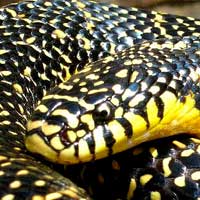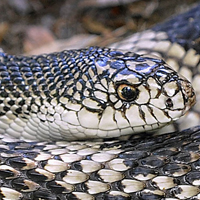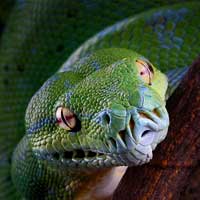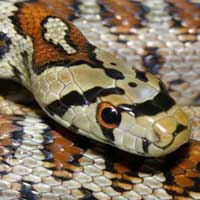Everything You Need to Know About the Diadem Rat Snake
The Diadem Rat Snake, scientifically known as Spalerosophis diadema, belongs to the Colubridae family, which is the largest family of snakes, encompassing a diverse range of non-venomous and mildly venomous species known for their adaptability and widespread distribution across various habitats.
Scientific Name: Spalerosophis diadema
Snake Family: Colubridae
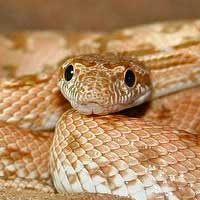
Introduction to the Diadem Rat Snake
The Diadem Rat Snake (*Spalerosophis diadema*), also known as the Royal Rat Snake, is a non-venomous species native to North Africa, the Middle East, and parts of Asia. Renowned for its striking coloration and adaptability, this snake is a popular choice among reptile enthusiasts. With proper care, the Diadem Rat Snake can thrive in captivity and showcase its unique behaviors and patterns.
Building the Ideal Habitat for the Diadem Rat Snake
Creating a habitat that mimics the Diadem Rat Snake's natural environment is crucial for its well-being. These snakes inhabit arid and semi-arid regions in the wild, so their enclosure should reflect these conditions:
- Enclosure Size: A minimum of 40 gallons for adults, with ample space for movement and climbing.
- Temperature Gradient: Maintain daytime temperatures of 80-90°F with a basking spot around 95°F, and nighttime temperatures between 70-75°F.
- Humidity: Keep humidity levels low, around 30-40%, to match their natural environment.
- Substrate: Use sand, coconut fiber, or a mix of soil and sand to replicate their arid habitat.
- Enrichment: Provide hiding spots, rocks, and branches to encourage climbing and exploration.
Refer to the table below for quick habitat setup guidelines:
| Habitat Element | Recommended Specifications |
|---|---|
| Enclosure Size | 40+ gallons |
| Temperature | 80-90°F (day), 70-75°F (night) |
| Humidity | 30-40% |
| Substrate | Sand, coconut fiber, or a soil-sand mix |
Feeding the Diadem Rat Snake: Diet and Tips
The Diadem Rat Snake is carnivorous, feeding primarily on small mammals and birds in the wild. In captivity, their diet is easy to manage:
- Juveniles: Feed pinky mice every 5-7 days.
- Subadults: Offer small to medium mice every 7-10 days.
- Adults: Provide adult mice or small rats every 10-14 days.
- Prey Preparation: Use pre-killed prey to prevent injuries and stress during feeding.
- Hydration: Always provide fresh water in a shallow dish for drinking and soaking.
A regular feeding schedule supports healthy growth and activity levels.
Understanding the Behavior and Temperament of the Diadem Rat Snake
The Diadem Rat Snake is known for its active and curious nature. These snakes are captivating to observe, but understanding their behavior is key to providing proper care:
- Active Explorers: They are diurnal, meaning they are most active during the day.
- Climbing Enthusiasts: They enjoy climbing, so vertical space and branches are important.
- Temperament: While generally calm, they can be defensive if threatened, displaying hissing or striking behavior.
- Stress Indicators: Signs of stress include excessive hiding or refusing to eat, indicating adjustments may be needed in their habitat.
Understanding their temperament helps ensure a harmonious interaction and stress-free environment.
Health and Lifespan of the Diadem Rat Snake
The Diadem Rat Snake can live up to 15-20 years in captivity with proper care. Key aspects of their health include:
- Common Health Issues: Look out for respiratory infections, shedding problems, and external parasites like mites.
- Preventative Care: Maintain optimal temperature and humidity levels, and ensure a clean enclosure.
- Veterinary Support: Schedule regular check-ups with an exotic animal veterinarian.
- Monitoring Behavior: Regularly observe for signs of illness, such as lethargy or abnormal breathing.
Consistent care and attention to their environment will help your snake thrive.
Reproduction and Breeding of the Diadem Rat Snake
Breeding the Diadem Rat Snake requires careful attention to their natural reproductive cycle. Important points include:
- Breeding Season: Typically occurs in spring, following a winter brumation period.
- Clutch Size: Females lay 5-15 eggs per clutch.
- Incubation: Eggs should be incubated at 82-85°F for 50-60 days.
- Hatchlings: Provide appropriately sized enclosures and food for juveniles once they hatch.
Breeding success depends on proper preparation and attention to environmental conditions.
How to Handle and Care for Your Diadem Rat Snake
Handling and caring for your Diadem Rat Snake is essential to ensuring its health and building trust. Follow these tips:
- Handle your snake gently and support its entire body.
- Avoid handling immediately after feeding to prevent stress or regurgitation.
- Provide a clean and secure enclosure to minimize stress and maintain hygiene.
- Incorporate enrichment items like branches and hides to encourage natural behaviors.
- Monitor their behavior and physical condition for signs of stress or illness.
Regular care and attention will ensure your Diadem Rat Snake remains healthy and well-adjusted.



